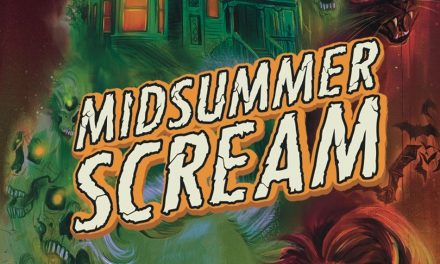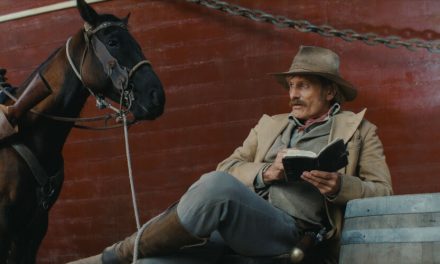When was the last time you actually watched The Texas Chain Saw Massacre? The seminal Tobe Hooper classic is celebrating its 50th anniversary this year. It was released today, October 11th, 1974. From the moment we all sat down and saw the sticky, hot, disgusting, and shocking film, audiences knew what true terror was. There aren’t a lot of movies that’s terror holds up these days. What scared audiences in 1974 might not translate very well to today’s audiences. In the case of The Texas Chain Saw Massacre, it holds up, and then some. Looking back at the film, several things stand out.
The most important thing that stands out on a rewatch is that the film holds up in providing absolute terror. It provides that immense terror without showing very much of the blood or gore. The quick cuts from violence add to the intrigue for the audience. You have to play out what Leatherface is doing in your mind, which makes anything shown on screen that much scarier. I’m sure there are members of the horror community that think they’re too big and bad for Ol’ Leatherface and the Sawyer family at this time. We’ve got movies like Terrifier 3 hitting theaters showing off immense amounts of gore and blood that don’t leave too much to the imagination of the audience. That’s just what the wave of horror movies is on right now.
But back in 1974, this movie was absolutely unheard of. Making a movie this violent (even if most of it is implied) and scary wasn’t a thing. All you had previously was in 1973 with the release of The Exorcist, which is insane to think that two of the best horror movies ever were released in back-to-back years.

Looking at the terrifying images in The Texas Chain Saw Massacre, there’s so many to pick from. It’s not just all Leatherface with a chainsaw or throwing teenagers on hooks. Drayton Sawyer and Grandpa are terrifying. The Hitchhiker (or Nubbins Sawyer) is on another level of terrifying though. The grounded realism of the family and what they do is something that you can feasibly imagine happening on a backroad of Texas. Add to that the hot, sticky, sweaty environment. When you watch this movie, you can feel the heat. You can imagine the smells of the Sawyer house and what goes on there. It’s one of the best examples of how cinematography can give off sensations beyond sight.
As a ’70s movie there’s a bit of psychadelic shots in the film that only add to the fear. Close-up shots of eyes and the entire sequence of Sally in the Sawyer house, being held captive, is just icing on the cake. The chase scene with Sally and Leatherface through the dust isn’t shot like most chase scenes are these days either. The takes linger longer than they would normally. It only adds to the terror that Sally is facing.

It’s not just chase scenes though. There’s the famous “shorts scene”. This scene is a masterclass in filmmaking. Watch it back for yourself. We don’t get movies that linger on imagery for this long. All of it is designed and mastered to unsettle the audience. We all know that Leatherface is in the house. We all know that she’s in immense danger. Tobe Hooper and Co. decide to milk that feeling for all its worth in this scene, and that’s why it works so well.
You can trace it all over this film, but today’s audiences complain about jump scares. They’re hard to do right, and this film doesn’t really utilize them in the way we do today. Paranoia abounds, and there’s no better example than the dinner scene at the Sawyer house.

Sally Hardesty screams like we all would in the situation as the Sawyer family antagonizes her and makes fun of her terror. It’s the juxtaposition of the absolutely insane situation and family trying to have a “normal” dinner. Her pleas don’t fall on deaf ears, they only bring more attention from Leatherface and Nubbins. If you thought that the acts before this scene were insane, the entire Sawyer family ups their insanity to another level. Just when you think Drayton turns a corner, it gets even more insane, lingering on Sally screaming and showing off close-ups of her bloodshot eyes. Sally’s only hope of pleading with The Cook and then his joining in on the laughter cements it as a point where you can see horror movies change.
Before this, we had the Universal Monsters, Hammer Horror, and other films in the ’60s and early ’70s. With the release of The Texas Chain Saw Massacre, we saw a new breed that led to a boom in horror movies in the ’80s. Movies like Halloween, Friday the 13th, and A Nightmare On Elm Street owe everything to TCM. From the moment it screened 50 years ago on October 11th, 1974, you can point to that as a massive moment for movies in general.
For more on Halloween, make sure to check out Fright-A-Thon.

![Celebrating 50 Years Of ‘Texas Chain Saw Massacre’ And It’s Immense Terror [Fright-A-Thon]](https://www.thathashtagshow.com/wp-content/uploads/2024/10/TCM-1250x640.jpg)



![Jump Into The World Of Alpine Free Climbing In ‘The Alpinist’ [Review]](https://www.thathashtagshow.com/wp-content/uploads/2021/08/239646169_3898944276872631_9141525178211741011_n-440x264.png)
